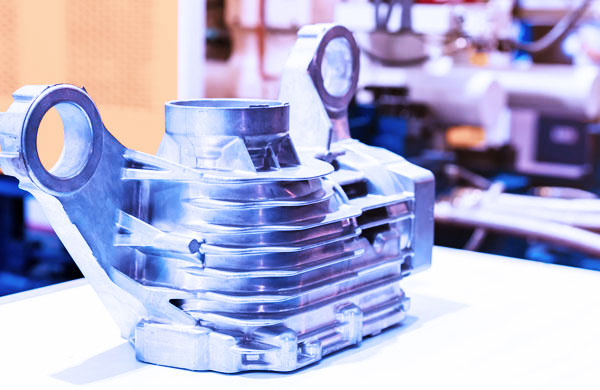The Ultimate Guide To Stahl Specialty Company
Table of ContentsThe Best Strategy To Use For Stahl Specialty Company7 Simple Techniques For Stahl Specialty CompanySome Known Factual Statements About Stahl Specialty Company Fascination About Stahl Specialty CompanySome Known Details About Stahl Specialty Company
Chemical Comparison of Cast Light weight aluminum Alloys Silicon promotes castability by lowering the alloy's melting temperature level and boosting fluidity throughout spreading. In addition, silicon adds to the alloy's strength and use resistance, making it beneficial in applications where resilience is crucial, such as vehicle components and engine parts.It also boosts the machinability of the alloy, making it much easier to refine right into completed products. In this means, iron adds to the total workability of aluminum alloys.
Manganese adds to the stamina of aluminum alloys and enhances workability. It is generally made use of in functioned aluminum items like sheets, extrusions, and profiles. The visibility of manganese help in the alloy's formability and resistance to breaking during manufacture procedures. Magnesium is a lightweight element that provides stamina and influence resistance to aluminum alloys.
Zinc improves the castability of aluminum alloys and helps control the solidification process throughout spreading. It enhances the alloy's toughness and solidity.
The Only Guide for Stahl Specialty Company
Due to the fact that aluminum-silicon alloys have excellent casting buildings, high gas properties, simple procedures, and excellent corrosion resistance, aluminum-silicon alloys are most typically utilized in the die-casting market in the house and abroad. At the same time, aluminum-silicon alloys are also relatively very early and widely identified alloys created and utilized in die-casting. After continuous research and improvement, a lot of the existing worldwide mainstream aluminum-silicon alloys have been completed and are absolutely nothing greater than A356, A360, A380, ADC12, B390, and A413.
The key thermal conductivity, tensile stamina, return stamina, and prolongation differ. Amongst the above alloys, A356 has the highest possible thermal conductivity, and A380 and ADC12 have the lowest.

The 8-Minute Rule for Stahl Specialty Company
In precision casting, 6063 is appropriate for applications where elaborate geometries and top notch surface area coatings are extremely important. Examples consist of telecommunication enclosures, where the alloy's remarkable formability permits streamlined and aesthetically pleasing layouts while keeping structural stability. visit the site In the Lights Solutions market, precision-cast 6063 elements produce sophisticated and efficient illumination components that require complex shapes and good thermal efficiency.
(https://writeablog.net/stahlspecialc/stahl-specialty-company-is-one-of-the-largest-permanent-mold-foundries-in-the-us)
The A360 shows remarkable prolongation, making it ideal for complex and thin-walled elements. In accuracy casting applications, A360 is fit for markets such as Consumer Electronics, Telecommunication, and Power Devices.

In precision spreading, aluminum 413 radiates in the Customer Electronic Devices and Power Tools sectors. This alloy's remarkable deterioration resistance makes it a superb choice for outside applications, guaranteeing resilient, long lasting products in the stated markets.
How Stahl Specialty Company can Save You Time, Stress, and Money.
When you have actually chosen that the light weight aluminum die casting procedure is suitable for your project, a vital following step is making a decision on one of the most appropriate alloy. The light weight aluminum alloy you select will significantly affect both the casting process and the buildings of the end product. Since of this, you need to make your choice meticulously and take an educated strategy.
Establishing the most ideal light weight aluminum alloy for your application will certainly mean weighing a large array of qualities. These relative alloy characteristics follow the North American Die Casting Association's guidelines, and we've split them right into two groups. aluminum foundry. The first group addresses alloy features that influence the manufacturing procedure. The 2nd covers attributes impacting the residential properties of the end product.
The alloy you pick for die casting directly impacts a number of facets of the casting procedure, like how simple the alloy is to deal with and if it is vulnerable to casting problems. Hot fracturing, additionally called solidification splitting, is a common die casting issue for light weight aluminum alloys that can result in interior or surface-level rips or fractures.
The Best Guide To Stahl Specialty Company
Particular light weight aluminum alloys are much more susceptible to warm splitting than others, and your selection should consider this. An additional common issue discovered in the die spreading of light weight aluminum is die soldering, which is when the actors sticks to the die wall surfaces and makes ejection hard. It can damage both the actors and the die, so you need to try to find alloys with high anti-soldering buildings.
Rust resistance, which is currently a notable characteristic of light weight aluminum, can differ substantially from alloy to alloy and is a necessary particular to think about depending on the ecological conditions your product will certainly be revealed to. Put on resistance is another home commonly looked for in aluminum items and can separate some alloys.